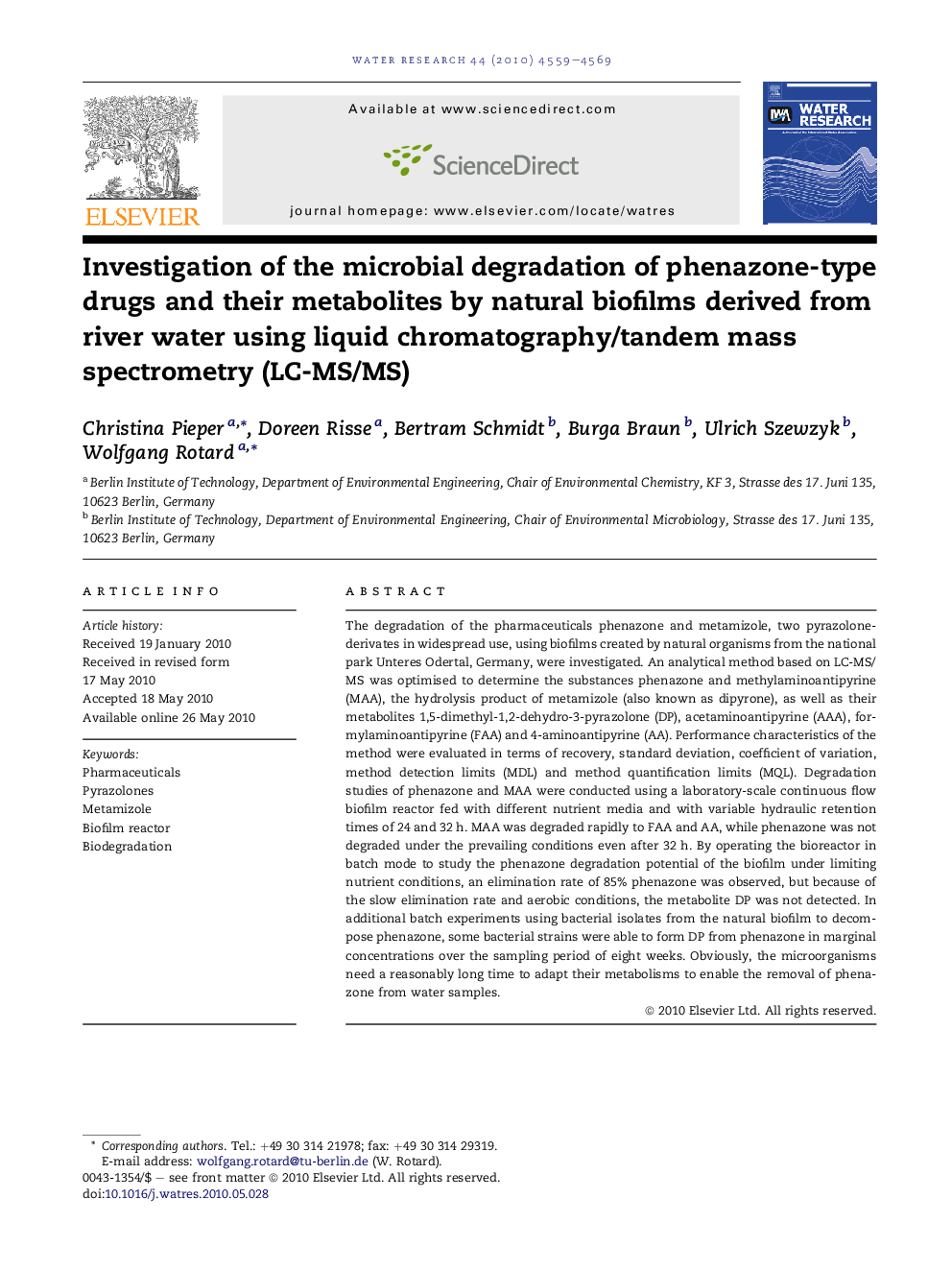| Article ID | Journal | Published Year | Pages | File Type |
|---|---|---|---|---|
| 4483866 | Water Research | 2010 | 11 Pages |
The degradation of the pharmaceuticals phenazone and metamizole, two pyrazolone-derivates in widespread use, using biofilms created by natural organisms from the national park Unteres Odertal, Germany, were investigated. An analytical method based on LC-MS/MS was optimised to determine the substances phenazone and methylaminoantipyrine (MAA), the hydrolysis product of metamizole (also known as dipyrone), as well as their metabolites 1,5-dimethyl-1,2-dehydro-3-pyrazolone (DP), acetaminoantipyrine (AAA), formylaminoantipyrine (FAA) and 4-aminoantipyrine (AA). Performance characteristics of the method were evaluated in terms of recovery, standard deviation, coefficient of variation, method detection limits (MDL) and method quantification limits (MQL). Degradation studies of phenazone and MAA were conducted using a laboratory-scale continuous flow biofilm reactor fed with different nutrient media and with variable hydraulic retention times of 24 and 32 h. MAA was degraded rapidly to FAA and AA, while phenazone was not degraded under the prevailing conditions even after 32 h. By operating the bioreactor in batch mode to study the phenazone degradation potential of the biofilm under limiting nutrient conditions, an elimination rate of 85% phenazone was observed, but because of the slow elimination rate and aerobic conditions, the metabolite DP was not detected. In additional batch experiments using bacterial isolates from the natural biofilm to decompose phenazone, some bacterial strains were able to form DP from phenazone in marginal concentrations over the sampling period of eight weeks. Obviously, the microorganisms need a reasonably long time to adapt their metabolisms to enable the removal of phenazone from water samples.
